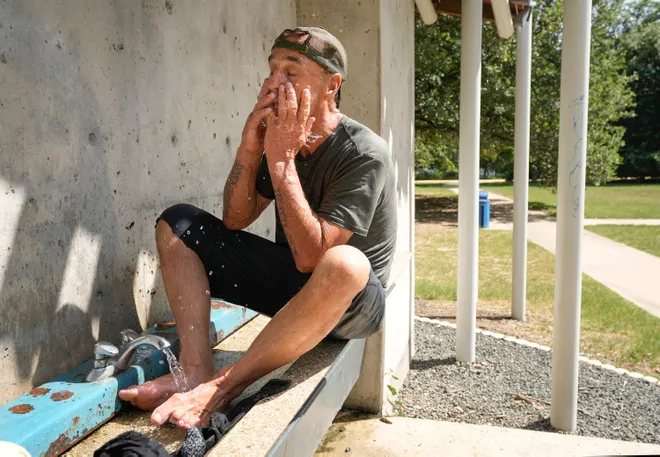The scorching summer of 2023 has etched its mark in history, not only with sweltering temperatures but also with a record number of heat-related deaths across the United States. The unprecedented loss of life has prompted widespread concern and a renewed focus on the impact of climate change, public health, and community preparedness.

A Stark Reality: The Rising Toll of Extreme Heat
According to recent reports, the number of Americans who succumbed to heat-related causes last year reached an alarming high, setting a new record that underscores the severe and often underestimated dangers of extreme heat. The surge in fatalities has been linked to an increase in prolonged heatwaves, a phenomenon that has become more frequent and intense due to global climate change.
The most vulnerable populations, including the elderly, those with pre-existing health conditions, and individuals without access to adequate cooling resources, were disproportionately affected. As temperatures soared across the country, many communities struggled to cope, revealing significant gaps in public health infrastructure and emergency response systems.
Climate Change: A Driving Force Behind the Heat Crisis
The record-breaking heat and the resulting death toll cannot be viewed in isolation from the broader context of climate change. Experts have long warned that rising global temperatures would lead to more frequent and severe heatwaves, and the events of 2023 have provided a grim confirmation of these predictions.
Climate scientists emphasize that the extreme heat experienced in recent years is not a temporary anomaly but part of a long-term trend driven by human-induced climate change. As greenhouse gas emissions continue to rise, the Earth’s atmosphere traps more heat, leading to hotter summers and milder winters. This shift in weather patterns has far-reaching consequences for public health, agriculture, and the environment.
Public Health at Risk: The Silent Killer of Heat
Heat is often called the “silent killer” because its effects are not always immediately apparent. Unlike other natural disasters, such as hurricanes or floods, heatwaves do not leave visible destruction in their wake, but their impact on human health can be devastating. Heat-related illnesses, such as heat exhaustion and heatstroke, can escalate quickly and become fatal if not treated promptly.
The record number of heat-related deaths in 2023 highlights the urgent need for improved public health strategies to protect vulnerable populations. Public awareness campaigns, early warning systems, and access to cooling centers are critical components of an effective response to extreme heat events. However, these measures must be coupled with long-term efforts to address the root causes of climate change.
The Role of Communities and Local Governments
Local governments and communities play a vital role in mitigating the impact of extreme heat. In many areas, cooling centers were established to provide relief for those without access to air conditioning, but these facilities were often overwhelmed by the sheer number of people seeking refuge. Additionally, power outages in some regions exacerbated the crisis, leaving many residents without the ability to cool their homes.
Community-led initiatives, such as distributing water and providing transportation to cooling centers, proved essential in reducing the number of heat-related deaths. However, the scale of the challenge requires a coordinated effort at all levels of government. Investing in resilient infrastructure, enhancing emergency preparedness, and ensuring equitable access to resources are crucial steps in safeguarding public health.
A Call to Action: Addressing the Heat Crisis
The record number of heat-related deaths in 2023 serves as a stark reminder of the urgent need to address the growing threat of extreme heat. Policymakers, public health officials, and community leaders must work together to develop and implement strategies that can protect the most vulnerable members of society.
Reducing greenhouse gas emissions, promoting sustainable urban planning, and improving public health infrastructure are key components of a comprehensive approach to tackling the heat crisis. Additionally, educating the public about the risks of extreme heat and providing resources for those in need can help prevent future tragedies.
Moving Forward with Resilience
As the United States grapples with the aftermath of the deadliest heatwave in its history, there is a collective responsibility to learn from the past and build a more resilient future. By addressing the root causes of climate change and strengthening community preparedness, we can reduce the risk of heat-related deaths and protect the health and well-being of all Americans.
For more insights on public health and climate change, visit Digital Digest for in-depth analysis and expert perspectives.




